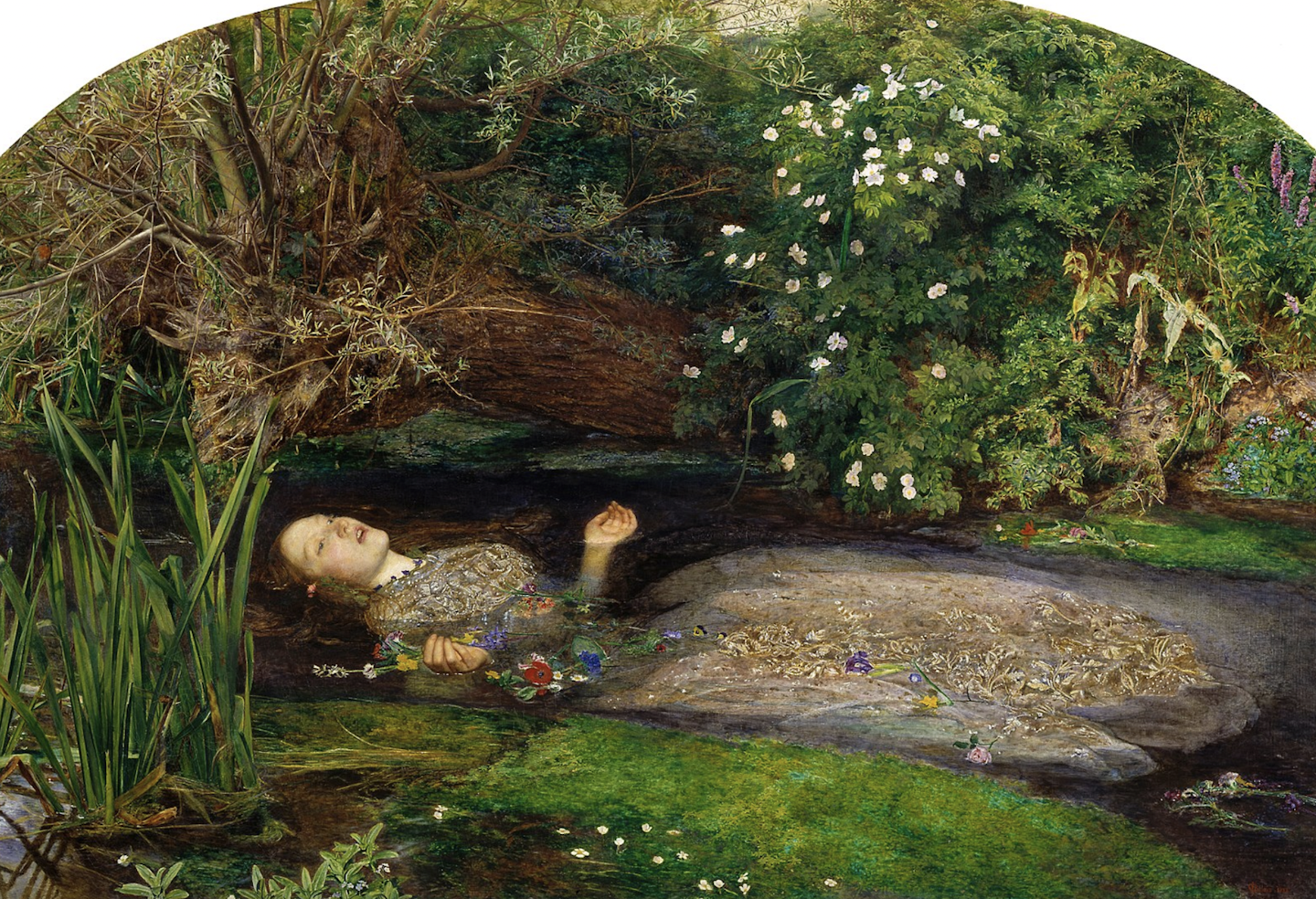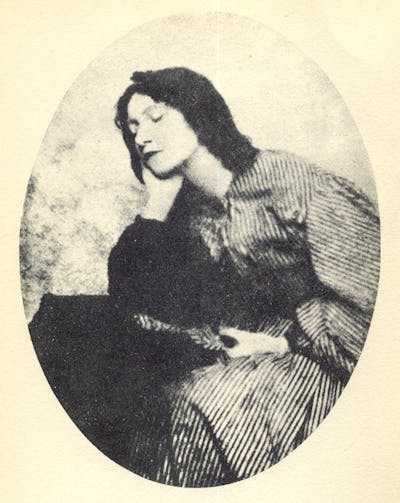As a professor of pre-Raphaelite studies, I was excited to see that the track list for Taylor Swift’s 12th album, The Life of a Showgirl includes a song called The Fate of Ophelia. Ahead of the album’s release, fans and art historians speculated that the inspiration could come from John Everett Millais’s painting Ophelia (1851-52), one of the most visited paintings at Tate Britain.
The painting shows Ophelia, the heroine of Shakespeare’s play Hamlet (1623), floating in the river after her doomed relationship had driven her to madness and suicide.
The cover art for The Life of a Showgirl confirms this. It shows Swift wearing a silvery outfit, partially submerged in water with her hands floating palm-up to the surface. So far, so Everett Millais. Though the styling is very different from Millais’s work, the pose, with focus on her hands and face, seemed to give a nod to his Ophelia.

The model who posed for Millais’s painting, Elizabeth Siddal (who is buried in Highgate, near where Swift once lived) lay in a bathtub while he painted her. When the candles heating the water went out, she stayed there for hours, uncomplaining, until she became ill.
As a muse and model, Siddal exemplifies the woman silenced by and sacrificed to male artistic ambition. Swift’s cover transforms the corpse-like Ophelia into a striking image, with her eyes open and staring, as though a dead woman has come back to life to accuse us. The female figure is no longer a muse (or a showgirl).
Siddal was interested in similar themes. In her poem My Lady’s Soul, she wrote about a woman transformed through death into art:
Low sit I down at my lady’s feet
Gazing through her wild eyes,
Smiling to think how my love will fleet
When their starlike beauty dies
The woman in the poem may be silenced, but her eyes accuse us of objectification.
We know Swift is a reader: she’s referenced Daphne du Maurier’s novel Rebecca, the poet Emily Dickinson, The Great Gatsby and Romeo and Juliet among others, in her music. And the first song on the album, The Fate of Ophelia, references Siddal as well as Shakespeare’s tragic heroine.
The song’s conceit is that a happy relationship has saved the singer from Ophelia’s fate of madness and drowning. Swift has said told interviewers that she prefers a happy ending, having rewritten Romeo and Juliet in Love Story (2008), and The Fate of Ophelia is quite detailed in its references to Hamlet: “The eldest daughter of a nobleman / Ophelia lived in fantasy / But love was a cold bed full of scorpions / The venom stole her sanity.”
The chorus goes: “All that time / I sat alone in my tower / You were just honing your powers / Now I can see it all. / Late one night / You dug me out of my grave and / Saved my heart from the fate of Ophelia.”
Alone in a tower, waiting for a prince to come? That sounds like some other Shakespearean or pre-Raphaelite heroines, such as Mariana, from Shakespeare’s play Measure for Measure (1604) who was reinterpreted by the poet Alfred Tennyson in 1832. Millais painted Mariana in 1851. The speaker in Swift’s song, however, has been saved from death: “You dug me out of my grave.”

There are all kinds of interesting resurrection metaphors in the song: was Swift already dead, then? Is this about Ophelia, buried with partial rites due to the suspicion that she killed herself? Or is this about Siddal, the muse and model whose body was exhumed by her husband?
When Siddal died by overdose of laudanum (an opiate many Victorians were addicted to since it was prescribed for many illnesses) in 1862, she was buried at Highgate cemetery. Her grief-stricken (or guilt-ridden) husband Dante Gabriel Rossetti threw his manuscript poems into her coffin. Seven years later, the coffin was exhumed in order to restore the manuscripts to Rossetti for publication.
The myths exploded from that point. Charles Augustus Howell, the unscrupulous friend of Rossetti who oversaw the exhumation, claimed that Siddel’s body was perfectly preserved, her hair had continued growing in her coffin and – as Rossetti wrote to Swinburne in a letter dated October 16 1869 – he believed that “could she have opened the grave, no other hand would have been needed”.
In her reworking of the Ophelia and Siddal story, Swift undermines the stereotype of the mute, decorative showgirl by overlaying it with her own more triumphant ending.
In isolation, Swift’s conflation of Siddal, Ophelia and her own persona isn’t necessarily that progressive: after all, the song features a woman waiting for someone to save her. However, taken in conjunction with the rest of the album, it’s clear that Swift’s approach is to explore the public face of women, from Elizabeth Taylor (reminiscent of Clara Bow from her last album) to Eldest Daughter, and culminating in the title track, which indicates the pain behind the facade of a public figure, “hidden by the lipstick and lace”.
Looking for something good? Cut through the noise with a carefully curated selection of the latest releases, live events and exhibitions, straight to your inbox every fortnight, on Fridays. Sign up here.
This article is republished from The Conversation, a nonprofit, independent news organization bringing you facts and trustworthy analysis to help you make sense of our complex world. It was written by: Serena Trowbridge, Birmingham City University
Read more:
- I’ve researched Clara Bow – it’s no wonder the actress inspired Taylor Swift’s new album
- How ‘critical karaoke’ is helping researchers to explore the music of Taylor Swift
- How Taylor Swift became a femme fatale … with a little help from Sylvia Plath
Serena Trowbridge does not work for, consult, own shares in or receive funding from any company or organisation that would benefit from this article, and has disclosed no relevant affiliations beyond their academic appointment.


 The Conversation
The Conversation
 TODAY Pop Culture
TODAY Pop Culture The Hollywood Gossip
The Hollywood Gossip Elle
Elle Vanity Fair
Vanity Fair Good Morning America Video
Good Morning America Video Atlanta Black Star Entertainment
Atlanta Black Star Entertainment FOX 32 Chicago Entertainment
FOX 32 Chicago Entertainment People Books
People Books People Human Interest
People Human Interest Raw Story
Raw Story The List
The List Aljazeera US & Canada
Aljazeera US & Canada